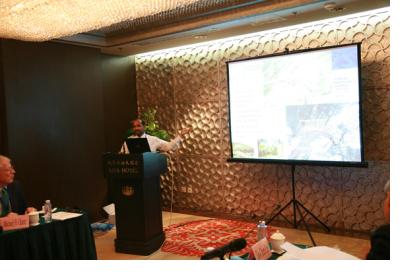On 8 and 9 May 2014, UN-SPIDER participated in the International Symposium of Integrated Disaster Risk Governance in Beijing. The event was jointly organized by the United Nations International Strategy for Disaster Reduction (UNISDR), the China National Commission for Disaster Reduction (NCDR), the Ministry of Civil Affairs of China, and the Ministry of Education of China.
The symposium is part of the on-going multi-level and multi-theme consultations for the inputs to the post-2015 Framework for Action. It brought together government officials and scientists to share achievements and experience, to identify challenges and bottlenecks in the implementation of the current Hyogo Framework for Action for Disaster Risk Reduction (HFA).
UN-SPIDER's expert Shirish Ravan chaired Session 2 of the symposium on "Government Role and Governance". He also gave a presentation entitled "Is Space Technology Contributing Enough to DRR - Challenges with Respect to Implementation of HFA and HFA2". The presentation highlighted how activities of UN-SPIDER complement the implementation of HFA and also provided a few thoughts on the role of space technology in the Post 2015 Framework of Disaster Risk Reduction (HFA 2).
During the round table discussions with Margareta Wahlström - the Special Representatives of the UN Secretary-General for Disaster Risk Reduction -, UN-SPIDER, the Economic and Social Commission for Asia and the Pacific (ESCAP) and the National Disaster Reduction Centre of China (NDRCC) proposed to spell out the effectiveness of space-based information in the HFA 2 process. They urged that the Disaster Risk Reduction inputs for the Sustainable Development Goals (SDGs) also highlight the role of space-based information in this context.
| Attachment | Tamaño |
|---|---|
| Programme of the International Symposium of Integrated Disaster Risk Governance (1.16 MB) | 1.16 MB |
| Presentation: Is Space technology contributing enough to Disaster Risk Reduction? (4.39 MB) | 4.39 MB |

